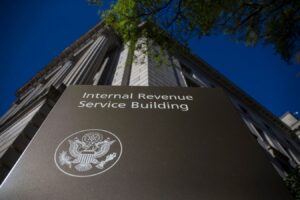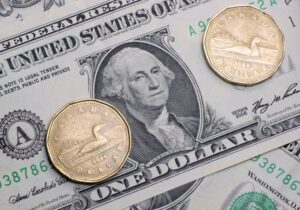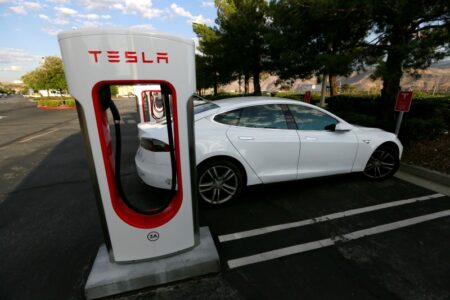WASHINGTON (Reuters) -President-elect Donald Trump has tasked billionaire Tesla (NASDAQ:) CEO Elon Musk with setting up a panel to streamline the U.S. government. Although Trump has said little about how this group would operate, Musk previously set an ambitious goal of cutting $2 trillion of federal spending.
Musk, the world’s richest person, will head the new panel along with former Republican Presidential candidate Vivek Ramaswamy. Here is how it might work.
WHAT DOES MUSK WANT TO CUT?
Musk said at a Trump rally at Madison Square Garden in October that the federal budget could be reduced by “at least” $2 trillion. That ambitious goal exceeds total discretionary spending, including defense spending, which is estimated to total $1.9 trillion out of $6.75 trillion in total federal outlays for fiscal 2024, according to the Congressional Budget Office.
Musk, whose companies include the electric vehicle maker Tesla and commercial space company SpaceX, has extensive federal contracts for rockets and other space operations with the National Aeronautics and Space Administration and the Pentagon.
Musk has also tussled with various federal regulators. The Federal Aviation Administration has a say in SpaceX rocket launches and the Environmental Protection Agency has fined the company over pollution near a launch site in Texas. The National Highway Traffic Safety Administration is investigating autonomous driving functions in Tesla’s cars. The Securities and Exchange Commission disciplined Musk for a 2018 tweet about taking Tesla private.
Ramaswamy, who founded pharmaceutical company Roivant Sciences (NASDAQ:), has worked with the Food and Drug Administration, an agency he has called “corrupt”. On social media site X in 2023 he wrote: “Countless FDA regulations and actions are hypocritical, harmful & unconstitutional.”
WHAT HAVE MUSK AND TRUMP SAID ABOUT THE PANEL?
Trump in a statement on Tuesday said the panel would “provide advice and guidance from outside of government,” on slimming down the government, cutting regulations, reducing spending and restructuring federal agencies.
Trump wants to abolish the Department of Education, giving states greater control of schooling. He also wants to sharply cut the “deep state” – career federal employees he says are clandestinely pursuing their own agendas.
Trump and Musk have suggested the panel will make dramatic cuts. However the U.S. Constitution gives Congress the power over the federal budget. Congress can take or disregard advice from outside panels like the proposed efficiency group.
In an effort to be transparent, Musk said the panel will post its “actions” for public comment.
“Anytime the public thinks we are cutting something important or not cutting something wasteful, just let us know!” he said on X.
He also mentioned creating a list of “dumb” spending, which he noted would be “extremely entertaining”.
On Tuesday, Ramaswamy said the panel would “soon begin crowdsourcing” examples of government waste and alleged fraud.
WHAT IS THE PRECEDENT FOR THE EFFICIENCY PANEL?
In February 1982, former President Ronald Reagan announced he would form a group of private sector experts to recommend ways to eliminate inefficiency and waste. That June, his executive order formed a panel that became known as the Grace Commission for its chairman J. Peter Grace, former CEO of W.R. Grace and Co.
Grace raised money to fund the effort through a foundation. About 150 business leaders volunteered time on an executive committee that oversaw 36 Grace Commission task forces, which reviewed agencies or functions.
The Commission issued a report in January 1984 with 2,500 recommendations. The task forces came out with reports as well.
“Most of the recommendations, especially those requiring legislation from Congress, were never implemented,” the Reagan Library said.
In March 2017, Trump signed an executive order aiming to improve efficiency, effectiveness, and accountability and “eliminate or reorganize unnecessary federal agencies.” It directed each agency to submit a plan to reorganize. He signed a separate executive order to place “regulatory reform” task forces and officers within agencies.
Trump unsuccessfully tried to kill at least 19 agencies during his first term. He called for eliminating the Overseas Private Investment Corporation that helps spur private investment in foreign development projects and the Corporation for Public Broadcasting. He also tried to cut funding for Amtrak, subsidies for rural airline service and the Special Olympics.
WHAT EXPERIENCE DOES MUSK HAVE WITH COST CUTTING?
After Musk bought the social media app Twitter, he laid off roughly 3,700 employees, half its workforce. Revenue shrank as advertisers pulled spending and hundreds more employees subsequently resigned. He later renamed the social media site “X”, but its valuation has slumped under his ownership.
Musk has had much greater success with SpaceX. Its Falcon 9 rocket slashed launch costs with its reusability. This sprouted new satellite markets, giving rise to the company’s fast-growing Starlink constellation, which has disrupted the established satellite communications industry and helped shape modern military strategies. SpaceX is now a major defense contractor.
“I would hope that he will look for places to do what he did at SpaceX,” said Steve Grundman, a deputy under secretary at the Pentagon under President Bill Clinton.
“The way to save big money is to delete stuff, close things,” Grundman said, adding the task is complicated because, “you’re never going to find you’re never going to find a thing that is pure dead weight.”
WHAT ARE THE RULES FOR A PANEL LIKE THIS?
The committee would likely operate under the Federal Advisory Committee Act, a 1972 law ensuring panels provide advice that is prompt, objective and open to the public. It mandates cost controls and record keeping requirements that apply to the roughly 1,000 committees with some 60,000 members advising the President and the executive branch at any given time.
Ramaswamy said on Wednesday, again on X, that the panel will have a legal mandate given recent decisions by the Supreme Court the curtailed the power of regulators.
Read the full article here
















